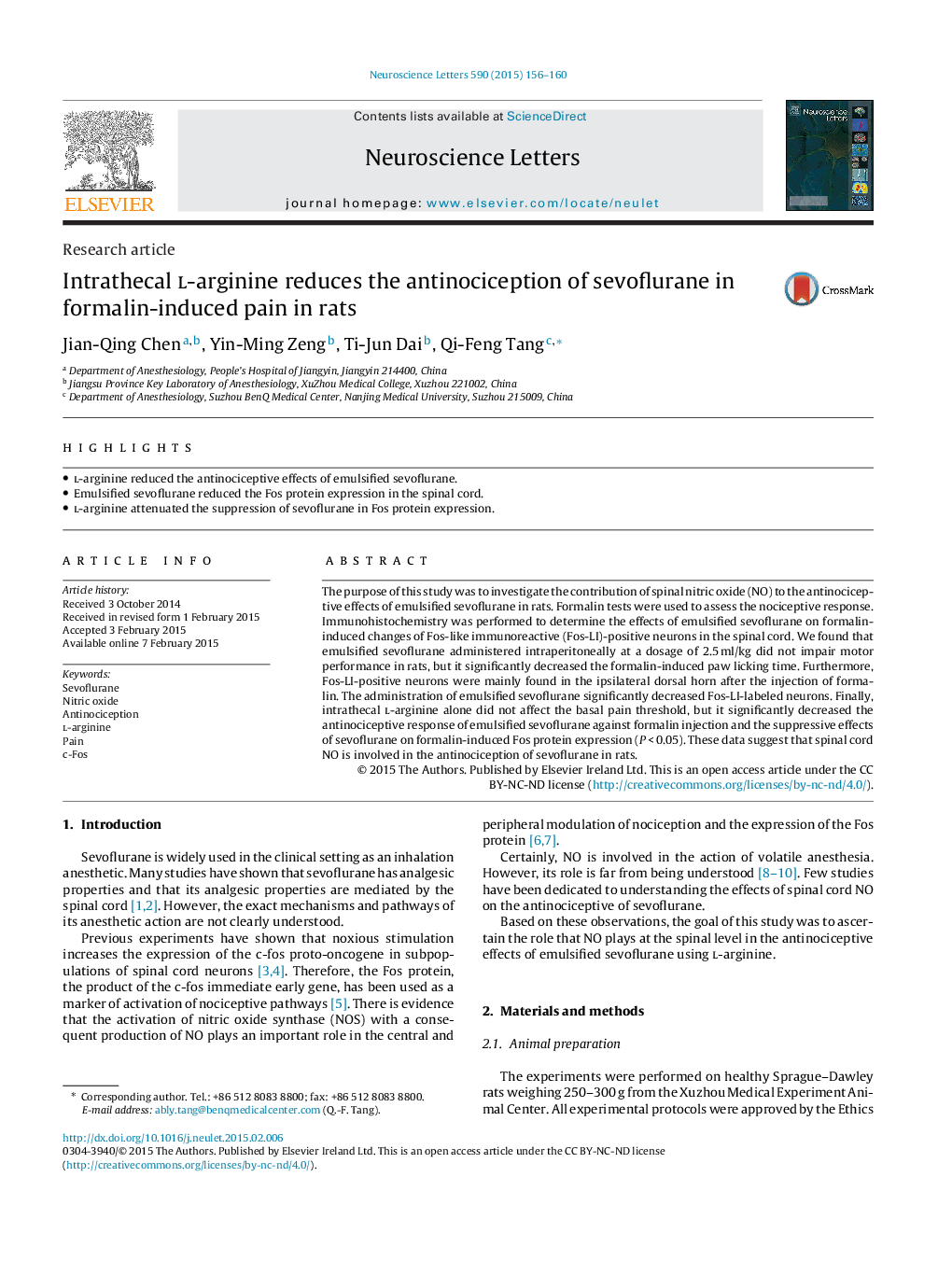| Article ID | Journal | Published Year | Pages | File Type |
|---|---|---|---|---|
| 6280809 | Neuroscience Letters | 2015 | 5 Pages |
Abstract
The purpose of this study was to investigate the contribution of spinal nitric oxide (NO) to the antinociceptive effects of emulsified sevoflurane in rats. Formalin tests were used to assess the nociceptive response. Immunohistochemistry was performed to determine the effects of emulsified sevoflurane on formalin-induced changes of Fos-like immunoreactive (Fos-LI)-positive neurons in the spinal cord. We found that emulsified sevoflurane administered intraperitoneally at a dosage of 2.5Â ml/kg did not impair motor performance in rats, but it significantly decreased the formalin-induced paw licking time. Furthermore, Fos-LI-positive neurons were mainly found in the ipsilateral dorsal horn after the injection of formalin. The administration of emulsified sevoflurane significantly decreased Fos-LI-labeled neurons. Finally, intrathecal l-arginine alone did not affect the basal pain threshold, but it significantly decreased the antinociceptive response of emulsified sevoflurane against formalin injection and the suppressive effects of sevoflurane on formalin-induced Fos protein expression (PÂ <Â 0.05). These data suggest that spinal cord NO is involved in the antinociception of sevoflurane in rats.
Related Topics
Life Sciences
Neuroscience
Neuroscience (General)
Authors
Jian-Qing Chen, Yin-Ming Zeng, Ti-Jun Dai, Qi-Feng Tang,
